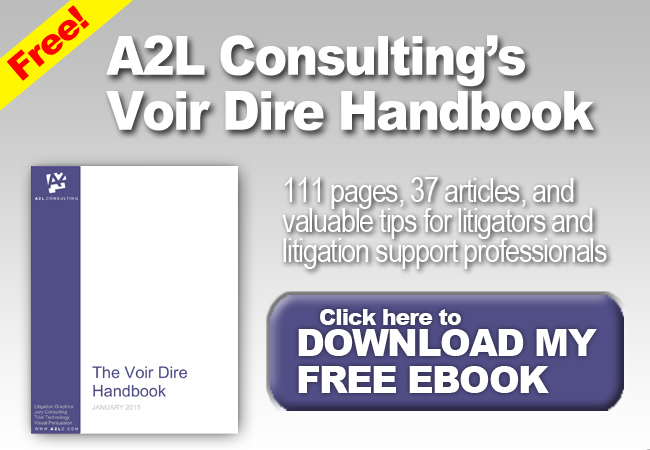Most trial lawyers think they know what a voir dire consultant does. You bring one in to read jurors—maybe to catch the one person who crosses their arms, won’t make eye contact, or wears an ACAB pin to court. If that’s your understanding, let me be the first to tell you: you’re barely scratching the surface.
A good voir dire consultant doesn’t just help you read jurors.
A great one changes the way you see your case.
In our firm’s earliest days here in Washington, DC thirty years ago, I saw it happen in a high-profile business litigation case. The lawyer—a seasoned, no-nonsense litigator—was convinced his case rested on logic and fairness. Our consultant listened, nodded, then asked one question: “Why should a juror care about your client?”
There was silence. Then frustration. Then the real work began.
Voir Dire Isn’t an Interview. It’s the First Act of Trial.
The biggest mistake I see lawyers make is treating voir dire like a box-checking exercise. Get rid of the worst jurors. Move on. But that approach ignores what every jury consultant worth their salt knows: jurors don’t start neutral—they start guessing what kind of story they’re about to hear.
Voir dire is your first chance to frame the story and reveal its moral center. If you only ask questions about bias, you miss the opportunity to plant a theme.
Let me give you a concrete example.
In a medical device case, we once advised a lawyer to open voir dire with a question not about liability or negligence, but about standards of trust. “Who here has ever had to decide whether to trust an expert?”
That led to stories about doctors, auto mechanics, financial advisors—and created space to talk about how much trust jurors should extend to experts in the trial. By the time opening arguments started, jurors were already primed to see our expert as the most reasonable voice in the room.
The Real Value of a Voir Dire Consultant? Revealing Your Blind Spots.
Most trial teams are too close to the case. You think you know who your jurors will be. You think you’ve got the story nailed. But when a good consultant starts asking questions—What’s the emotional core of this case? What does your client’s behavior signal to a skeptical juror?—you realize how much you’ve left unsaid.
In one employment case, the lead attorney insisted the case was about fairness. Our consultant reframed it as a story about freedom—freedom from retaliation, freedom to speak up. That pivot in voir dire led to a more engaged jury and a stronger emotional thread throughout the trial.
Bottom Line: A Voir Dire Consultant Isn’t a Juror Whisperer. They’re a Narrative Architect.
If you’re hiring a consultant to help you spot a bad apple, you’ll get your money’s worth. But if you bring them in early, treat them like a strategic partner, and let them shape voir dire as a launchpad—not a screening tool—you’ll get something far more valuable:
Clarity. Strategy. And maybe, just maybe, a jury that actually wants to rule for you.
Interested in seeing how a voir dire consultant could reshape your next case? Schedule a free 15-minute strategy call and let’s talk about your juror profile, your case themes, and any blind spots.
Because the best time to start shaping your jury is before you ever set foot in the courtroom.
Other articles related to voir dire consultants, jury consulting, and jury selection.
- 10 Effective Voir Dire Questions When You Represent the BIG Company
- 6 Questions to ALWAYS Ask in Voir Dire
- Data-Driven Jury Consulting and Why it Matters
- 7 Tips For Crafting An Excellent (and Useful) Juror Questionaire
- A2L (now Persuadius) Voted Best Jury Consultants & Best Trial Graphics Firm
- Main Persuadius Jury Consulting Page






Leave a Comment